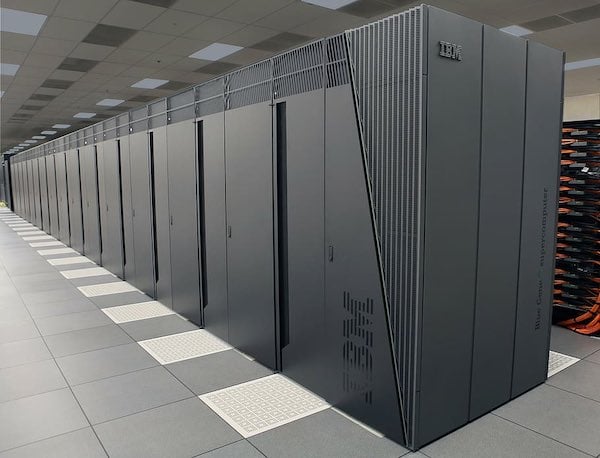Xiao Zhong, a research analyst at Lux Research, explains why supercomputers could prove particularly valuable in solving complex real-world problems.
As suggested by their name, supercomputers are computers that perform remarkably well, significantly better than most computers used by individuals worldwide. These computers are currently used by several scientists and engineers worldwide, as they can analyse large quantities of data and carry out extensive computations considerably faster than more conventional computers.
At a time like this, with most countries in the world facing serious challenges due to the COVID-19 pandemic, supercomputers could prove immensely valuable, as they could aid medical researchers in their quest to identify treatments, cures, or other interventions that might be most effective in battling coronavirus.
Analyses by Lux Research, a company that offers strategic advice and ongoing intelligence on emerging technologies, suggest that supercomputers are playing and could play a major role in overcoming the current crisis.
Electronics Point interviewed Xiao Zhong, who leads a team at Lux specialized in providing insight on materials, manufacturing technologies and digital innovation, as well as in analysing how synergies at the intersection between these technologies could disrupt the electronics industry.
The analyses conducted by his team of analysts typically focus on chemical and materials informatics, generative design, advance simulation technology, 3D printing, and other non-traditional manufacturing technologies.
Zhong, who holds a Ph.D. in materials science from New York University, authored 17 peer-reviewed articles on a variety of different materials and technology-related topics. In this article, he shares his thoughts about how emerging technologies, particularly supercomputers, could aid us during these challenging times.
3D Printing and the Efficient Manufacturing of Vital Products
Overall, Zhong believes that the technological tools that are likely to prove most valuable during the current crisis are emerging manufacturing technologies and software solutions.
“Manufacturing technologies can potentially produce better products in a highly automated way with little human intervention,” he says. “The latter leverages AI algorithms, data, and computing power and can accelerate the innovation process itself.”
3D printing, for instance, is currently being used by several companies, researchers, and hobbyists to produce a variety of products that are of vital importance for facing the COVID-19 pandemic, such as personal protective face shields, test kits, and even surgical masks, respirators, and ventilator components. While many of these products are of great value, consumers and buyers should be cautious about their quality, as not all of them have been medically tested.
Lux research created a microsite that offers research analyses specific to COVID-19. On this site, they periodically publish research and insight about how companies can best respond to the current crisis through technological innovation.

Xiao Zhong, research analyst at Lux Research.
The Value of Supercomputers
While manufacturing technologies, such as 3D printing, offer practical support in protecting people against the COVID-19 virus, supercomputers have the potential of aiding us in finding a cure or vaccine. By analysing large quantities of data at considerably high speeds, they could help researchers to identify promising treatments or drugs that may work well against the virus.
“The U.S government organized a consortium that is granting free supercomputing resources to research groups that aim to find cures for COVID-19,” Zhong said. “For example, Dr. Kevin Esvelt, a professor at MIT Media Lab, is now developing relevant machine learning models that are run on the supercomputers provided by the consortium.”
Another research team at the University of Tennessee and Oak Ridge National Lab is also using supercomputers to seek out promising cures or treatments for the COVID-19 virus. More specifically, this team is using the SUMMIT, a supercomputer developed by IBM that is said to be the fastest in the world, to screen large quantities of data, looking for small-molecule drugs that can prevent COVID-19 from binding to the human cell, thus potentially stopping the infection.
This methodology, known as computer-aided drug design (CADD), allows researchers to screen millions or even billions of drug candidates computationally. If this was done by humans manually, it would be far more time consuming and considerably less efficient. Due to their high performance and computational power, supercomputers can speed up CADD processes further.
“As suggested by the work that is being carried out by Oak Ridge National Lab, supercomputers have the potential of speeding up cure development for COVID-19,” Zhong said. “By using a supercomputer rather than conducting lab experiments, drug screening procedures can be dramatically sped up, which could ultimately accelerate the process of finding a cure for the virus.”

IBM processing and computer mainframe equipment.
A Glance Into the Future of Supercomputers
The current global crisis has definitely highlighted the great potential of supercomputers in helping us solve real-world problems and overcome complex challenges. Due to their high computing speeds and power, these computers are ideal for almost all applications in which a task can be completed virtually or requires a vast amount of calculations.
“In the current situation, supercomputers can aid the research of cures,” Zhong said. “That said, we still need human experts that can organize that research and apply supercomputers when necessary. Think of supercomputers as high-speed engines that can boost your car, but you still need a human driver to control it, at least for now.”
According to Zhong, in the future supercomputers are likely to prove most valuable for running advanced artificial intelligence tools, such as deep learning algorithms and models. In contrast with more conventional computers, in fact, these sophisticated technologies could meet the high computational demands of deep learning techniques and other neuromorphic computing methods, allowing them to analyze data faster and more efficiently.
“Needless to say, deep learning already proves to be commercially successful in many areas- facial recognition, speech recognition, natural language processing, just to name a few,” Zhong said. “All these applications need a vast amount of computing power to training deep neural networks. The success of deep learning is likely to continue and more powerful computers, such as supercomputers, will be needed.”





